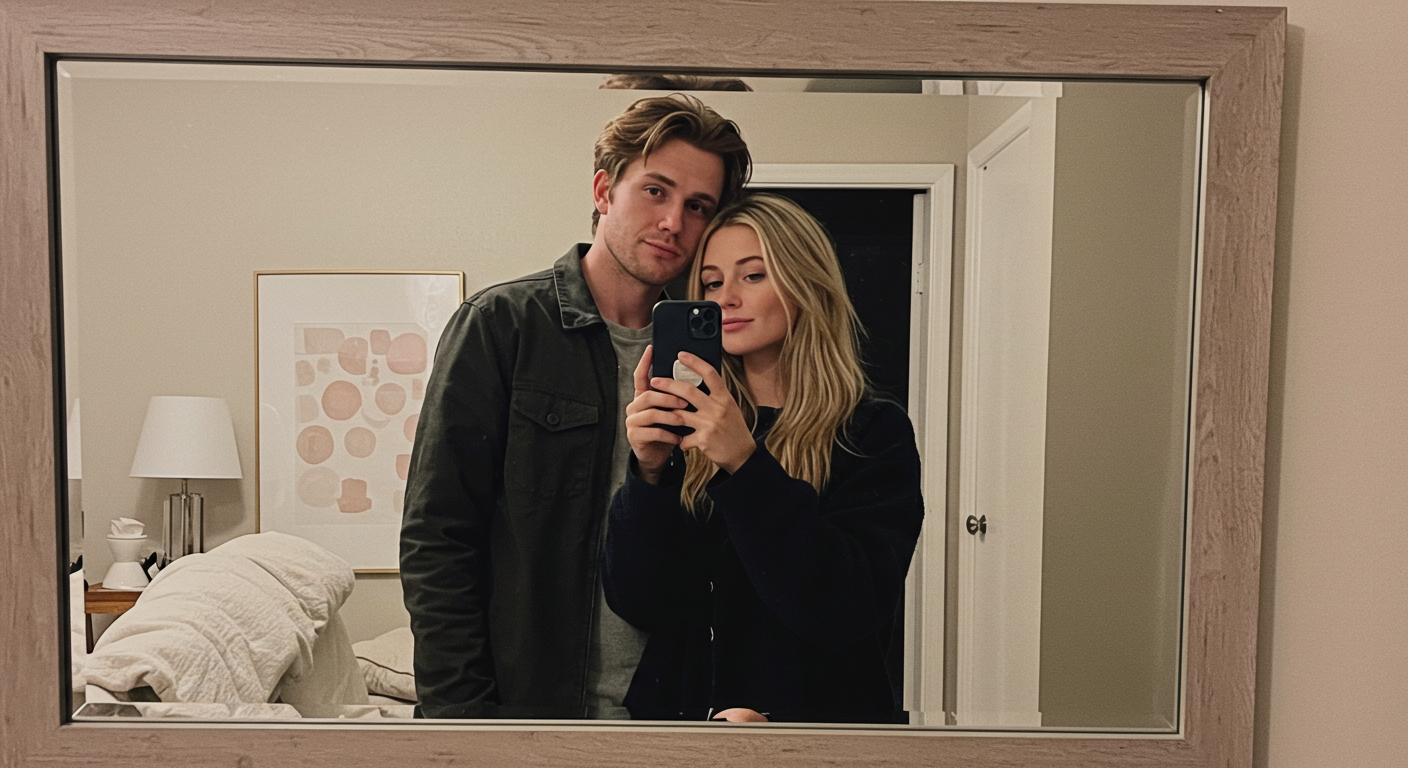From Situationship to Relationship: The 2025 Guide to Making It Official

There’s nothing casual about a situationship. Sure, it might start light—texting, occasional late-night meetups, inside jokes without too much depth. But over time, something shifts. You start craving more definition. You notice how their silence after a great night leaves you spinning. You replay their compliments, wondering if they meant something deeper. You check their story views, your stomach dropping when they post something vague.
What you’re in isn’t nothing. But it’s also not clear. And that’s what makes it so heavy. Situationships can feel both thrilling and maddening—like you’re half in love, half in limbo. You’re doing relationship things without the relationship agreement. You’re loyal to someone who technically owes you nothing. And even when it’s fun, there’s a low hum of anxiety beneath it all: Is this going anywhere?
This dynamic has become ridiculously common in 2025. Blame the dating apps, the culture, the collective fear of commitment—whatever you want. But the truth is, a lot of people are stuck in undefined spaces with someone they care about. They don’t want to scare them off by asking what this is, but they also can’t keep pretending it’s fine to exist in the maybe. That tension? It’s real. And it’s not sustainable.
The thing is, moving from situationship to relationship isn’t about pushing someone into a corner or having some grand “what are we” conversation over wine. It’s slower. It’s more emotional. And, if done with care, it’s entirely possible.
But first, you have to stop lying to yourself about what this is.
1. Signs You’re in a Situationship
Not all situationships look the same on the surface—but most of them feel eerily similar underneath. You’re not quite dating, not quite friends, and definitely not strangers. You exist in this weird, romantic no man’s land where everything feels like something, but nothing ever gets defined.
Here’s what that often looks like:
-
You spend time together, but only on their terms.
You’re always available, but they’re always conveniently “busy” when it comes to meeting your needs. Spontaneity replaces consistency. You see each other when it’s easy—not when it matters. -
There’s intimacy—but it’s not matched with clarity.
You might sleep together, talk late into the night, even share deeply personal things. But the moment you try to talk about feelings or expectations, they dodge, deflect, or say they “don’t want to overthink things.” -
Plans are made last minute and rarely include the future.
You might go out, hang out, even travel together—but any talk of “what are we doing next month” is met with awkward silence or a subject change. -
You act like a couple, but only behind closed doors.
There’s affection, flirting, maybe even routines—but you’re not on their socials. Their friends don’t know your name. You feel like a secret dressed up as a convenience. -
You constantly second-guess yourself.
You spend hours wondering if you’re being “too much.” You replay conversations, trying to decode what they meant. You’re exhausted, not by conflict, but by the constant emotional ambiguity.
And perhaps most importantly:
-
You don’t feel secure.
Even when things are good, there’s a tension. You’re always waiting for the other shoe to drop. You can’t relax into it. Because somewhere inside, you know: if you asked for more, the whole thing might break.
That’s the core of a situationship: the illusion of intimacy with none of the infrastructure to support it. And no matter how fun or exciting it can be in the moment, the long-term emotional cost is real. If any of this feels familiar, don’t shame yourself for it. Just start being honest about where you actually stand—and whether that place is feeding you or slowly draining you.
2. How to Tell You’re Stuck in the Gray
You know it’s a situationship when everything feels like something—but nothing gets named. You’ve met each other’s friends, but there’s an invisible line you never cross. You talk regularly, but never make plans too far in advance. There’s affection, sometimes even intimacy, but no context for it. No framework. Just vibes.
You tell yourself it’s working. That you don’t need labels. That you’re “seeing where it goes.” But deep down, you know it’s stuck. And pretending not to care has become its own emotional labour. You’ve trained yourself not to ask questions. You’ve shrunk your needs into something more digestible. You’ve convinced yourself wanting more is unreasonable—even though it’s the most human thing there is.
It’s important to pause here and ask yourself: are you actually okay with this, or are you scared to lose what little you’re getting? Because that’s often the deal with situationships. You hold onto crumbs out of fear that asking for a slice of the cake will get you nothing at all. But that’s not love. That’s negotiation under duress.
The person you’re in this with might not even be malicious. They might be just as uncertain, just as scared. But if neither of you initiates clarity, then the ambiguity becomes the relationship. And it will stay that way until someone either settles—or breaks.
You don’t have to issue ultimatums. But you do need to be honest—with yourself first, and then with them. Because you deserve to know what game you’re playing. And you deserve someone who chooses you, not just when it’s easy, but also when it’s real.
3. You Can’t Change the Rules Without Owning Your Needs
The first mistake most people make when trying to move from situationship to relationship is treating it like a secret mission—dropping hints, subtly testing boundaries, or hoping the other person will magically start behaving like a partner. That approach usually leads to more confusion, not clarity.
If you want things to shift, you have to be willing to own your feelings out loud. That doesn’t mean delivering a TED Talk about your emotional state. It means getting honest with yourself first. Ask: What am I actually looking for here? Are you hoping for exclusivity? Emotional intimacy? Something long-term? Because if you’re not clear, you can’t expect them to be.
Most situationships survive on ambiguity. They thrive in silence. The moment someone speaks plainly—asks for more, defines the terms, says “this matters to me”—the bubble shifts. Not always in a bad way. Sometimes the other person is waiting for permission to be just as vulnerable. But other times, they shrink. They pull away. And that tells you everything you need to know.
So if you’re thinking about shifting gears, understand: clarity costs something. It might cost the comfort of the current dynamic. It might cost the illusion that things are “fine as they are.” But without that cost, there’s no movement. No definition. No relationship.
There’s power in saying, “This is what I want.” Even if it scares you. Especially if it scares you. Because at least then you’re living in reality, not in the half-light of almost-love.
4. The Shift Doesn’t Start With a Conversation—It Starts With Behavior
Contrary to what Instagram therapists might tell you, not every shift has to begin with “the talk.” In fact, most emotional transitions start with subtle behavior. Less performance. Less availability. Fewer yeses to half-hearted plans. More presence in your own life, less energy orbiting someone who hasn’t defined how they feel about you.
It’s not about playing games. It’s about signalling to yourself and to them that you’re no longer available for a non-committal dynamic. And people notice. They feel the energy shift. Suddenly the person who used to drop everything for a late-night “wyd” text is harder to pin down. The one who used to laugh off casualness is now asking deeper questions.
Sometimes you don’t need a big, dramatic confrontation. Sometimes the change begins with a subtle rebalancing of power. And here’s the beautiful part: when you stop settling, it becomes very clear who was only there for the ease—and who might be willing to meet you in the effort.
Not everyone will step up. But the ones who matter will. And if they don’t? At least you’re no longer stuck playing the role of someone who’s fine living in limbo.
5. If It’s Going Somewhere, It Shouldn’t Feel Like a Power Struggle
Here’s the thing people don’t talk about enough: if someone really wants to be with you, you won’t need to outsmart them to make it happen. You won’t need to carefully choreograph what you say, how you act, or when you text. You won’t be second-guessing every word or pretending to care less than you do.
You’ll just know.
That doesn’t mean it will be perfect or effortless. But it won’t feel like emotional chess. It won’t feel like trying to trick someone into seeing your worth.
Moving from a situationship to a relationship doesn’t work when one person is dragging the other into commitment. It works when both people recognise the value of what they have and want to take care of it. That desire might emerge slowly—but it does emerge. You’ll feel it in the way they start showing up more intentionally. In how the conversations deepen. In how the plans stretch beyond “this weekend.”
So pay attention to whether this feels like a negotiation or a collaboration. Are you working together toward something real, or are you doing emotional cartwheels while they watch from a safe distance?
Because long-term love doesn’t start with power games. It starts with two people being honest enough to say: I want this to be more than what it’s been. And then doing something about it.
6. Defining the Relationship Isn’t the End Goal—It’s the Beginning
It’s tempting to see “making it official” as the finish line. Like once you’ve got the label, everything will settle. You can relax. You’ve won.
But that’s not how relationships work.
Getting out of a situationship is just one part of the journey. What matters more is how you both enter the relationship. Are you aligned in how you communicate? Are you both willing to show up even when things get messy? Do you know what kind of partnership you’re building, or did you rush into “official” status just to quiet the uncertainty?
Because clarity without commitment is confusing—but commitment without clarity is worse. It becomes a trap. The Instagram post is there. The title is there. But the emotional safety, the consistency, the shared vision? Sometimes, still missing.
So don’t just fight for the label. Fight for the quality of the connection behind it. Fight for a relationship where you don’t have to question whether you’re being chosen—because it’s obvious, every single day.
And if you’re not getting that? Don’t be afraid to walk. You’re not asking for too much. You’re asking for the bare minimum of what real love requires: mutuality, maturity, and meaning.
Conclusion: You Don’t Need to Be in a Relationship—You Need to Be Seen
There’s no shame in wanting more. There’s no shame in admitting that half-relationships and maybes no longer feed you. Wanting clarity doesn’t make you clingy. Wanting consistency doesn’t make you intense. It makes you ready.
Situationships thrive on ambiguity. Relationships thrive on presence. The move from one to the other doesn’t happen through pressure or performance—it happens through truth. Through being honest enough to say,
“I like you. I care about this. But I need something real.”
And that’s not desperation. That’s self-respect.
So ask for the thing. Not because you’re afraid to lose them. But because you’re finally ready to stop losing yourself.
My Go-To Platform for Flings, Affairs, and MILFs
Looking for top-notch flings, affairs, or MILFs? Skip the rest, AdultFriendFinder is the gold standard. Zero bots, zero fakes—just real connections. I've scored big in multiple cities. Sign up now, it's FREE!








